Expert Guide to Critter Control in Washington, DC: Effective Wildlife Management Tips


Preventive Pest Control Strategies
House Exterior Protection
In a bustling urban environment like Washington, DC, effective preventive pest control strategies are crucial to maintaining a pest-free home. House exterior protection begins with meticulous attention to detail. Sealing cracks around windows, doors, and foundations is paramount to prevent pests from finding their way indoors. By using quality sealants and weather-stripping materials, you create a sturdy barrier against unwanted critters. Additionally, clearing debris such as fallen leaves, brush, and other clutter around your home's perimeter reduces hiding spots for pests, making it harder for them to infiltrate your living space. Furthermore, implementing measures to deter pests from entering, such as installing screens on windows and vents, reinforces your defenses against potential intrusions.
Yard Maintenance
A well-maintained yard not only enhances the aesthetic appeal of your property but also serves as a critical line of defense against pest infestations. Essential yard care routines, including regular mowing, pruning of shrubs and trees, and removing standing water, help eliminate breeding grounds for insects and rodents. Implementing methods such as strategic planting of pest-repelling plants and regular application of environmentally safe pesticides enhances your yard's pest-free status. By staying proactive with yard maintenance, you create an inhospitable environment for pests, reducing the likelihood of infestations and ensuring a pest-free outdoor space for your family to enjoy.
Indoor Cleanliness
Maintaining a pest-resistant indoor environment is key to preventing critters from taking up residence in your home. Expert cleaning tips and techniques focus on eliminating food sources and hiding places that attract pests. Regularly vacuuming carpets, cleaning up spills promptly, and storing food in airtight containers are simple yet effective ways to deter pests. Using natural cleaning agents like vinegar and baking soda not only keeps your home spotless but also reduces the risk of chemical residues that can attract pests. By incorporating these practices into your cleaning routine, you create an environment that is less attractive to critters, contributing to a pest-free living space.
Garbage Disposal
Proper waste management is a cornerstone of effective pest control. Efficient garbage disposal methods involve securely sealing trash bags, using lidded bins, and keeping outdoor dumpsters closed and clean to prevent pests from scavenging for food. Disposing of organic waste in compost bins away from the house minimizes odors that can attract pests. Emphasizing the importance of proper garbage disposal to all household members ensures that everyone plays a role in keeping pests at bay. By making conscious efforts to contain and dispose of waste properly, you reduce the likelihood of attracting pests to your property, creating a cleaner and healthier living environment for your family.
Other Pest Prevention Strategies
Beyond the fundamentals of house exterior protection, yard maintenance, indoor cleanliness, and garbage disposal, innovative ways to safeguard your home from pests further fortify your defenses. Implementing innovative measures such as installing ultrasonic pest repellents, using organic pest control products, and setting up physical barriers can supplement traditional pest prevention tactics. Embracing a holistic approach to pest control that combines both preventive strategies and advanced technologies reinforces your home's protection against potential critter invasions.
Introduction
Critter control in Washington, DC is a crucial topic that demands attention due to the increasing encounters with wildlife intrusions in urban areas. As urbanization continues to encroach upon natural habitats, wildlife species are adapting by seeking shelter and sustenance in human-populated regions. This shift necessitates a comprehensive understanding and effective management of critter control strategies to mitigate conflicts between humans and wildlife.
Understanding Critter Control
Defining Wildlife Intrusions
Defining wildlife intrusions refers to the encroachment of various critter species into urban environments, leading to potential conflicts with residents and property. This aspect of critter control is pivotal in delineating boundaries between human habitation and wildlife territories, as the coexistence of these two realms poses challenges and risks.
Importance of Critter Control in Urban Areas
The importance of critter control in urban areas cannot be overstated. With the rapid expansion of cities and towns, wildlife face displacement from their natural habitats, resulting in increased interactions with human communities. Effective critter control measures serve to safeguard public health, prevent property damage, and preserve biodiversity by managing wildlife intrusions in a humane and responsible manner.
Challenges of Critter Infestations
Property Damage
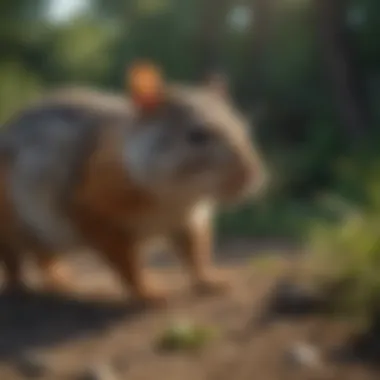
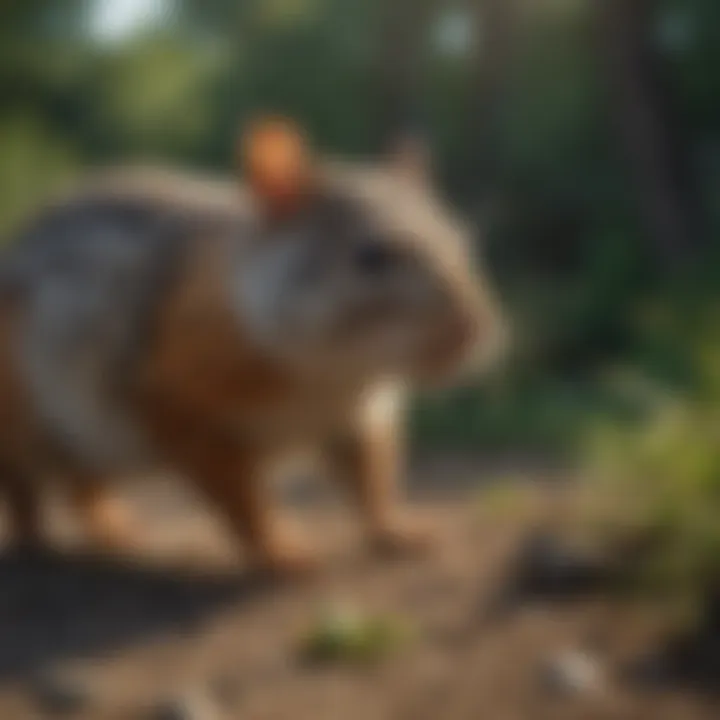
Property damage inflicted by critters can range from structural harm to landscaping destruction, impacting the aesthetic and functional aspects of residential and commercial properties. From gnawing on cables to burrowing through walls, critters pose significant risks to the integrity of buildings and outdoor spaces.
Health Risks
Critter infestations bring about health risks through the transmission of diseases, parasites, and allergens. Exposure to critter droppings, urine, and saliva can result in respiratory issues, bacterial infections, and allergic reactions, endangering the well-being of inhabitants. Managing health risks associated with critter infestations is paramount for maintaining a safe living environment.
Environmental Impact
The environmental impact of critter infestations encompasses disruptions to ecosystem dynamics, habitat degradation, and species displacement. As critters adapt to urban surroundings, their presence can lead to imbalances in local flora and fauna populations, affecting biodiversity and natural processes. Mitigating the environmental impact of critter infestations requires proactive conservation efforts and sustainable wildlife management practices.
Common Critter Species in
Importance of Common Critter Species in
In the realm of critter control in Washington, DC, understanding the common critter species holds significant importance. By delving into the behavior patterns, nesting habits, and control methods of these species, individuals can better equip themselves to effectively manage wildlife intrusions. Identifying the specific critters prevalent in the region enables residents to implement targeted strategies for critter control, ensuring both the safety of inhabitants and the preservation of urban ecosystems. Recognizing these common critter species serves as a crucial initial step in creating a comprehensive approach to critter control in the urban landscape.
Squirrels
Behavior Patterns
Behavior patterns play a pivotal role in understanding the nature of squirrel activity within urban environments. Squirrels are known for their agile movements, quick reflexes, and adaptable behaviors that allow them to thrive in various settings. Their tendency to scamper along rooftops, gnaw on electrical wires, and forage for food in garbage bins underscores the importance of addressing their behavior patterns when developing critter control strategies. By comprehending how squirrels behave in response to different stimuli and environmental factors, individuals can tailor their control methods to effectively deter these critters from causing disturbances.
Nesting Habits
Squirrels exhibit unique nesting habits that contribute significantly to their population density and distribution across urban spaces. These rodents are adept at constructing nests using a combination of leaves, twigs, and other materials found in their surroundings, often opting for high vantage points such as trees or attic spaces for nesting. Understanding the nesting preferences of squirrels equips individuals with valuable insights into where these critters are likely to establish their habitats, enabling proactive measures to prevent infestations and mitigate potential damage. By studying their nesting habits, property owners can implement preemptive strategies to discourage squirrel nesting and safeguard their structures.
Control Methods
When it comes to controlling squirrel populations in urban areas, employing effective control methods is essential to mitigating the risks associated with their presence. From utilizing humane trapping techniques to sealing entry points and implementing deterrents, a multi-faceted approach is recommended for managing squirrel intrusions. Live trapping offers a non-lethal method for capturing squirrels, allowing for their safe relocation to more suitable habitats. Additionally, exclusion devices such as mesh screens and chimney caps help prevent squirrels from accessing vulnerable entry points, reducing the likelihood of infestations. Furthermore, the strategic use of repellents can deter squirrels from frequenting specific areas, creating an environment less conducive to their presence. By combining these control methods, individuals can effectively address squirrel issues while promoting coexistence between humans and wildlife.
Effective Critter Control Strategies
In the context of critter control in Washington, DC, the focus on effective strategies is paramount. Urban areas like DC face unique challenges when it comes to wildlife intrusions, making it crucial to have robust critter control measures in place. By delving into effective critter control strategies, this article aims to provide readers with insights into essential techniques and methods for managing critters in urban environments. Understanding the specific elements, benefits, and considerations of effective critter control strategies is key to mitigating wildlife intrusions effectively.
Humane Removal Methods
Live Trapping
Live trapping is a humane method that involves capturing critters without causing them harm and then releasing them back into their natural habitats. In the realm of critter control, live trapping stands out for its ethical approach towards wildlife management. The key characteristic of live trapping is its focus on safely removing critters from urban areas while minimizing stress and harm to the animals. This method is a popular choice for this article due to its effectiveness in addressing critter issues without resorting to harmful practices. Live trapping's unique feature lies in its ability to provide a humane solution to critter infestations, although it can be time-consuming. Balancing conservation needs while addressing critter problems is vital, and live trapping aligns with these principles.
Exclusion Devices
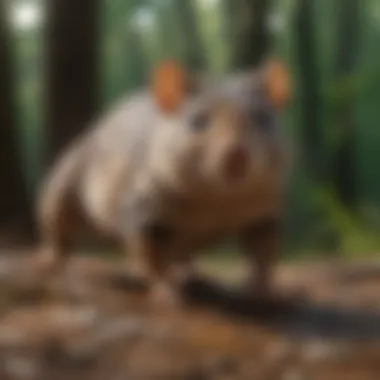
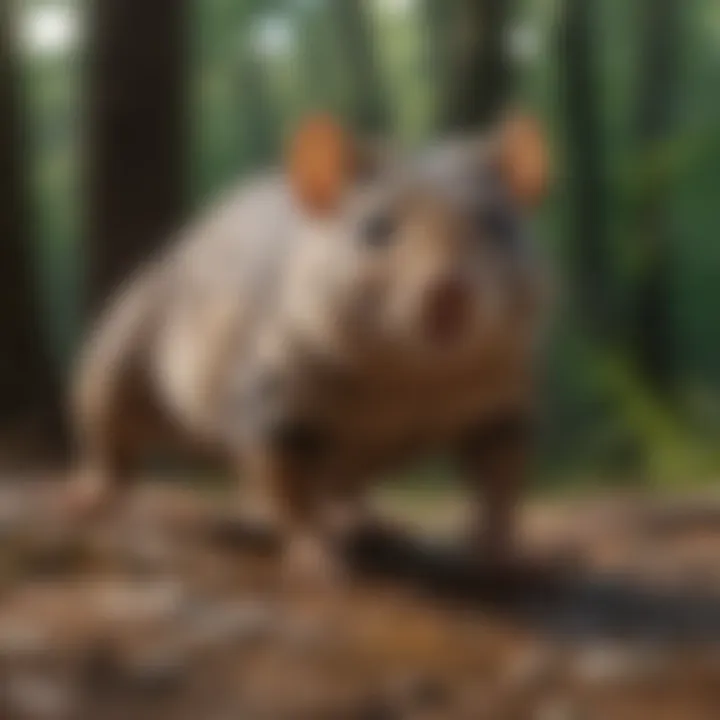
Exclusion devices are physical barriers designed to prevent critters from accessing specific areas or structures. These devices play a significant role in critter control by creating barriers that deter wildlife intrusion. The key characteristic of exclusion devices is their capability to restrict critters' movements without causing them harm. This method is a beneficial choice for this article because of its efficacy in keeping critters out of unwanted areas through non-lethal means. The unique feature of exclusion devices is their versatility in protecting different types of structures from critter entry, although they may require periodic maintenance. While exclusion devices offer advantages in preventing critter infestations, their installation costs and maintenance requirements should be considered.
Repellents
Repellents are substances or devices designed to deter critters from specific areas through unpleasant stimuli or scents. In critter control, repellents serve as a proactive measure to discourage wildlife from settling in urban environments. The key characteristic of repellents is their ability to create an unwelcoming environment for critters, prompting them to seek alternative habitats. This method is a popular choice for this article due to its non-invasive nature and ability to deter critters without causing harm. The unique feature of repellents is their versatility in targeting specific critter species while being eco-friendly. However, repellents may require regular reapplication to maintain effectiveness. Considering the benefits of repellents in deterring critter intrusions, their periodic usage is a small trade-off.
Preventive Measures for Long-Term Critter Control
Preventive measures for long-term critter control play a pivotal role in maintaining a harmonious coexistence between urban residents and wildlife intruders. In this article, we delve into the significance of implementing proactive strategies to deter critters from invading residential spaces, emphasizing the benefits of early intervention and sustainable management practices.
Sealing Entry Points
Inspection Protocols
Inspection protocols serve as the cornerstone of effective critter control by systematically identifying potential entry points and vulnerable areas that may attract wildlife. By employing thorough inspection procedures, homeowners can proactively detect and seal off access routes, preventing critters from infiltrating their premises. The meticulous nature of inspection protocols ensures a comprehensive assessment of property vulnerabilities, facilitating targeted intervention strategies tailored to each unique infestation scenario.
Material Recommendations
Selecting appropriate materials for sealing entry points is crucial in enhancing the resilience of critter deterrent mechanisms. By utilizing durable, weather-resistant materials, such as galvanized wire mesh or steel wool, homeowners can fortify their properties against unauthorized wildlife access. The strategic implementation of high-quality materials not only bolsters the structural integrity of entry-point seals but also minimizes the risk of critter re-entry, promoting long-term efficacy in critter control efforts.
DIY Techniques
Empowering homeowners with do-it-yourself (DIY) techniques enables them to take proactive measures in fortifying their properties against critter intrusions. DIY techniques may include caulking gaps, installing door sweeps, or securing vents with hardware cloth. By incorporating cost-effective and sustainable DIY solutions, individuals can actively contribute to maintaining a critter-free environment while fostering a sense of self-reliance in critter control endeavors.
Maintaining Cleanliness
Maintaining cleanliness in and around residential areas is paramount to mitigating factors that attract critters and facilitate infestations. By adopting vigilant waste management practices, implementing outdoor access control measures, and regulating vegetation growth, homeowners can create an inhospitable environment for wildlife intruders, reducing the likelihood of critter encounters and ensuring long-term critter control success.
Waste Management
Effective waste management practices involve securely storing trash in sealed bins, promptly disposing of organic waste, and keeping outdoor areas free of food debris. By eliminating potential food sources and minimizing odors that attract critters, homeowners can diminish the incentive for wildlife intrusions while promoting a hygienic living environment.
Outdoor Access Control
Restricting outdoor access points through fencing, barriers, or designated pathways helps control critter movement and prevent unwarranted incursions into residential premises. By implementing outdoor access control measures, homeowners can establish clear boundaries that discourage wildlife from encroaching on private property, fostering a peaceful cohabitation between humans and critters.
Vegetation Control
Managing vegetation around homes and gardens is essential in preventing critters from establishing nesting sites or hiding spots. Pruning overgrown foliage, trimming tree branches away from structures, and maintaining a well-manicured landscape reduces the shelter and camouflage opportunities available to wildlife, deterring critters from seeking refuge or sustenance within residential properties.
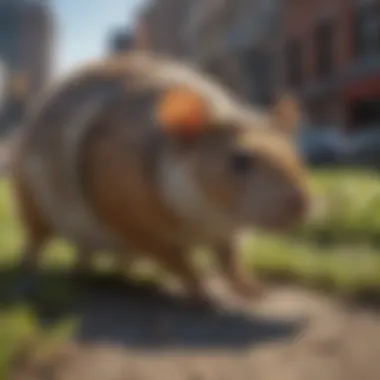
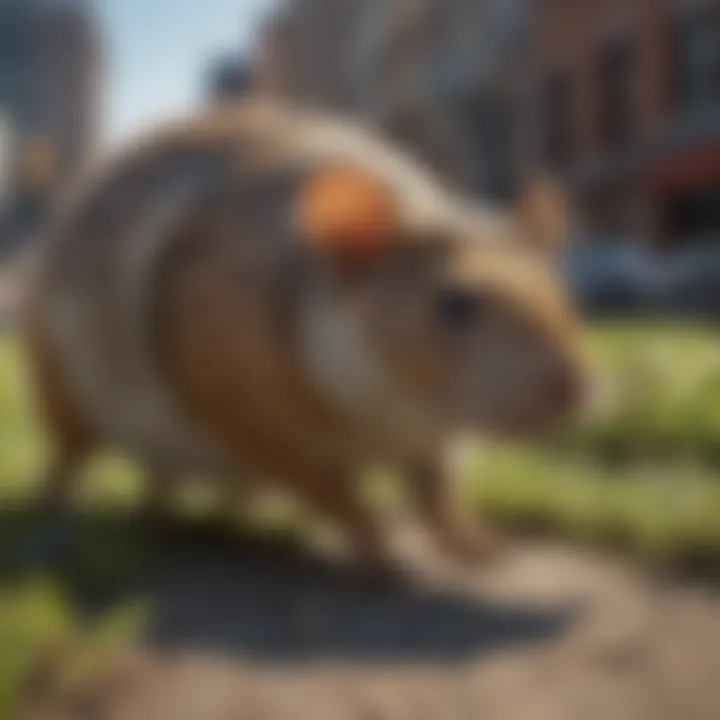
Community Collaboration
Emphasizing community collaboration in critter control initiatives fosters a collective responsibility towards promoting harmonious interactions between urban residents and wildlife species. By engaging in neighborhood initiatives, sharing information on critter sightings, and coordinating collective action plans, residents can synergize their efforts in addressing critter-related challenges and cultivating a supportive environment for sustainable critter management.
Neighborhood Initiatives
Initiating neighborhood initiatives, such as neighborhood watch programs or group clean-up events, encourages community members to actively participate in critter control activities and bolster communal efforts in creating critter-free zones. By fostering a sense of camaraderie and collective ownership over critter control measures, neighborhoods can strengthen their resilience against wildlife intrusions while nurturing a culture of environmental conservation.
Information Sharing
Facilitating information sharing among residents regarding critter behaviors, prevalent species, and proven control methods enhances community awareness and preparedness in managing critter encounters. By disseminating relevant information through community channels, such as newsletters, social media groups, or local workshops, residents can stay informed and empowered to take proactive steps in safeguarding their properties against critter incursions.
Collective Action
Engaging in collective action by mobilizing community resources, coordinating group interventions, and implementing joint critter control measures amplifies the impact of individual efforts and promotes a united front against critter infestations. By pooling together expertise, resources, and advocacy for critter-friendly practices, communities can effectively address critter challenges while fostering a sense of collaboration and inclusivity in urban wildlife management.
Conclusion
In the realm of critter control in Washington, DC, the Conclusion of this comprehensive guide plays a pivotal role in emphasizing the significance of proactive measures to address wildlife intrusions effectively. By delving into essential elements highlighted throughout the article, readers can grasp the holistic approach required to manage critter-related issues in urban environments successfully.
Summary of Key Points
Importance of Early Intervention
When considering the specific aspect of Importance of Early Intervention, it becomes evident that taking timely actions plays a vital role in preventing critter infestations from escalating. The key characteristic of this approach lies in its ability to nip potential problems in the bud, thereby saving homeowners from extensive damages and health risks. Early intervention serves as a beneficial choice for this article as it underscores the value of prompt responses in critter control, offering advantages such as cost-effectiveness and reduced environmental impact.
Balancing Conservation Needs
The aspect of Balancing Conservation Needs addresses the importance of safeguarding wildlife while implementing critter control strategies. By striking a delicate equilibrium between human needs and wildlife preservation, this concept ensures that interventions minimize harm to both parties. Its unique feature lies in promoting coexistence between urban dwellers and wildlife, with advantages including fostering biodiversity and maintaining ecological balance.
Sustainable Critter Management
Sustainable Critter Management stands out as a critical component in the overall critter control discourse, emphasizing long-term solutions that benefit both humans and wildlife. Its key characteristic involves implementing practices that are environmentally friendly and ethically sound, leading to lasting impacts on critter populations. This approach is advantageous for the article as it highlights the importance of adopting methods that ensure the well-being of critters and their habitats, promoting ecosystem stability.
Final Thoughts
Empowering Urban Dwellers
The aspect of Empowering Urban Dwellers empowers individuals to take control of critter-related challenges by providing them with the knowledge and tools needed to address wildlife intrusions effectively. Its key characteristic lies in fostering a sense of self-reliance and confidence among urban residents, enabling them to make informed decisions regarding critter management. This feature benefits the article by encouraging readers to become proactive in critter control, ultimately leading to sustainable outcomes and reduced reliance on external interventions.
Creating Harmony with Wildlife
Creating Harmony with Wildlife underscores the importance of cultivating mutual respect between urban communities and the wildlife that coexist in shared habitats. By prioritizing peaceful cohabitation and understanding wildlife behaviors, this aspect promotes harmonious interactions that benefit both humans and critters alike. Its unique feature involves fostering empathy and compassion towards wildlife, resulting in advantages such as reduced conflicts and enhanced biodiversity conservation efforts.
Continuous Learning and Adaptation
Continuous Learning and Adaptation advocates for ongoing education and adjustment in critter control practices to stay abreast of evolving challenges and solutions. Its key characteristic includes the promotion of a growth mindset that encourages individuals to adapt their approaches based on new information and experiences. Within this article, this aspect offers advantages like resilience in handling critter issues and staying ahead of potential problem areas, ensuring long-term effectiveness in wildlife management strategies.



